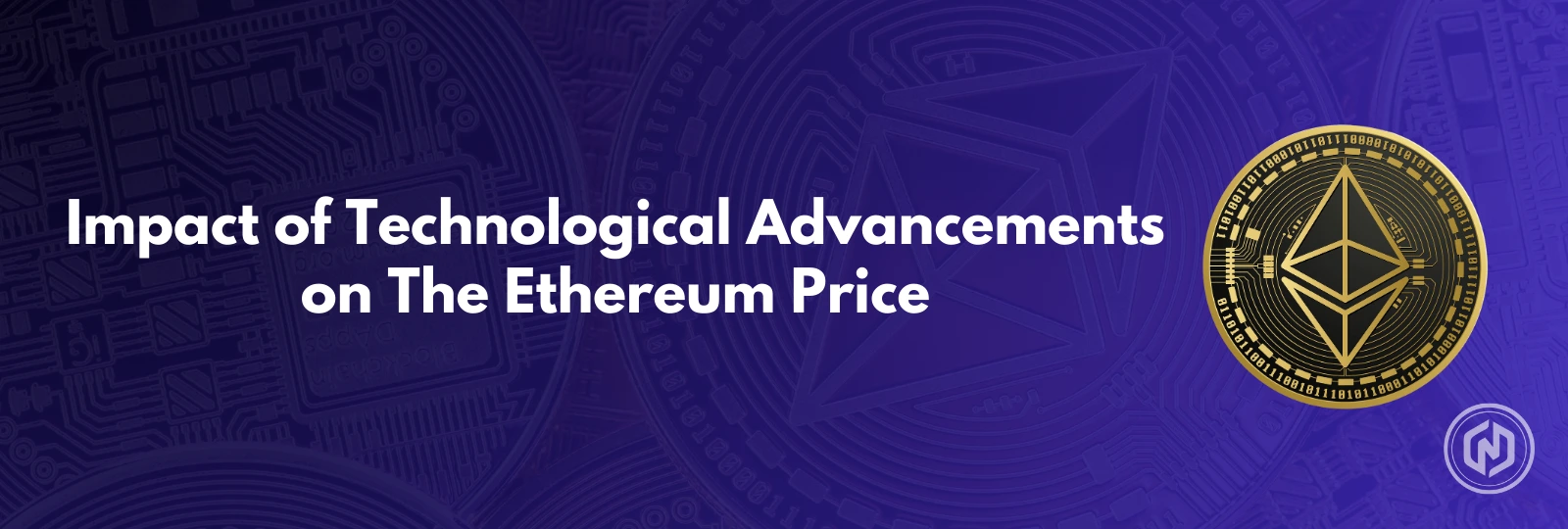Ethereum has been a pioneer in blockchain developments such as smart contracts, Decentralized Finance (DeFi), and NFTs, which has an important influence on its pricing. Ethereum 2.0 is one of the biggest developments, which consumes less energy and improves scalability. This development was due to its shift from PoW to PoS, which makes Ethereum technology more sustainable and draws in a wider audience, which frequently boosts ETH values. The expansion of DeFi and NFTs, which are the two most important Ethereum blockchain industries, has increased the usefulness of Ether because these apps need ETH to undergo transactions. Apart from these, ETH’s price will also be positively impacted by speculative trading, which is one of the recent advancements. Since the price swings are associated with continuous technological advancements, Ethereum’s position in digital banking is highlighted by its usefulness, scalability, and strong applications like Defi and NFTs.
Overview of Ethereum & Its Technology
Ethereum technology is a decentralized blockchain platform that enables the creation and implementation of smart contracts. These contracts act as self-executing contracts with conditions that are built on the code. Ethereum smart contracts have eliminated the necessity for intermediaries like banking. All these have made Ethereum the world’s programmable blockchain. This technology also supports decentralized applications (dApps) across a variety of sectors. Ethereum Virtual Machine (EVM), which allows for advanced programming skills, and its programming language are important components of Ethereum’s adaptability.
With the help of these tools, developers can create complex and automated dApps along with services for the Ethereum ecosystem. The transition of Ethereum from Proof of Work to Proof of Stake, known as ‘the Merge,’ has improved its scalability similar to that of the Shanghai and Dencun upgrades, which have increased efficiency and overall environmental effect. Since Ethereum is one of the popular crypto platforms, it acts as a home to millions of dApps, wallets, and a thriving project ecosystem, which can have a major impact on blockchain technology.
Key Technological Advancements
Some of the key technological advancements of Ethereum include the Ethereum 2.0 Upgrade, Layer 2 Scaling Solutions, De-Fi development, and NFT trends.
Ethereum 2.0 Upgrade
The Proof-of-Stake (PoS) consensus method replaces the Proof-of-Work (PoW) consensus mechanism in Ethereum 2.0, also referred to as Eth2. Ethereum is more eco-friendly than PoW systems thanks to this shift, which drastically lowers energy consumption by up to 99.9%. Beyond energy efficiency, Eth2 offers scalability enhancements, especially through shard chains, which distribute the network load among several parallel chains, enabling the network to perform thousands of transactions per second and eventually up to 100,000.
The PoS architecture encourages validators to lock up Ethereum as collateral, which ensures honest transaction verification and further enhances Ethereum’s security and decentralization. These enhancements have a favorable effect on Ethereum’s value as the network grows, in addition to improving its operating efficiency.
Layer 2 Scaling Solutions
Etherum’s Layer 2 solutions, including Arbitrum and Optimism, process transactions off-chain before settling on the main Ethereum blockchain to alleviate the network congestion. To make the price of Ethereum more affordable and user-friendly for decentralized apps (dApps), Layer 2 solutions drastically lower gas prices and speed up transactions by “rolling up” several transactions into a single on-chain transaction. By lowering costs and improving network performance, De-Fi and other apps become more widely available, which attracts more users and might raise Ethereum’s price as demand for the Ethereum De-Fi ecosystem increases.
DeFi Development
Ethereum is at the center of the financial revolution brought forth by decentralized finance (De-Fi). Most De-Fi initiatives are based on Ethereum, which makes use of its smart contract features to establish decentralized platforms for trading, lending, and borrowing. This increase in De-Fi apps has raised the demand for ETH for staking in De-Fi protocols as well as transaction fees, which has raised the ETH price.
NFT Trend
The market position and pricing of Ethereum have been greatly affected by its status as the primary blockchain for Non-Fungible Tokens (NFTs). Ethereum NFTs, which stand for distinct digital assets in the fields of art, gaming, and collectibles, have become increasingly popular. Many of the leading NFT markets, like OpenSea, are hosted on Ethereum. Ethereum’s value rises as a result of users depending on it to create, purchase, and trade NFTs. With the expansion of NFT transactions, Ethereum’s blockchain has come to represent the NFT ecosystem, solidifying its leadership in this space and the price increases.
Technological Development & Market Sentiment Correlation
The Ethereum network’s technological developments have a big impact on market sentiment and, in turn, affect the investment choices of investors. Improvements such as the Byzantium Hard Fork in 2017 and the launch of the Ethereum Virtual Machine (EVM) in 2015 have historically raised platform confidence and driven up Ethereum price as more investors and users became interested in the technology.
Layer 2 solutions, like Arbitrum and Optimism, are also important because they minimize transaction costs and congestion, which enhances user experience and boosts network utility. This scalability may draw in more users and decentralized apps (dApps), increasing Ethereum’s market worth even further. Improvements in Ethereum’s technology stimulate an optimistic investor attitude as per the Ethereum price prediction. These changes are expected to strengthen Ethereum’s place in the cryptocurrency industry and support its long-term price increase.
Conclusion
Since Ethereum continues to be the most popular blockchain for minting and trading these distinctive digital assets, the NFT growth also influences the growing demand for ETH. Investors expect more demand and wider acceptance of ETH when they see promising technological advancements, especially Layer 2 solutions or Ethereum 2.0, which will drive up prices.

